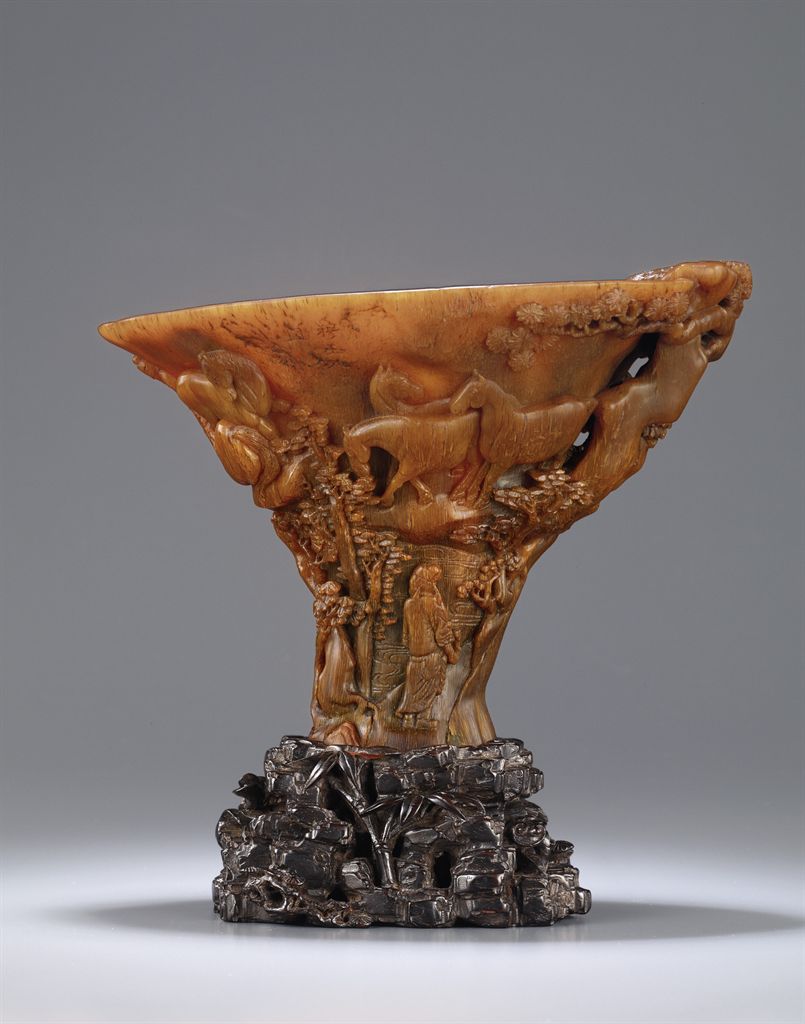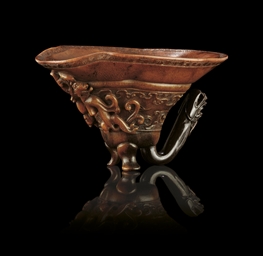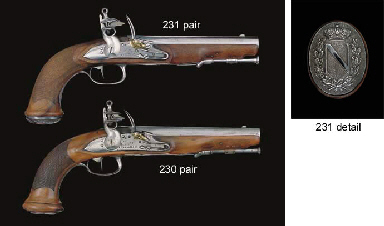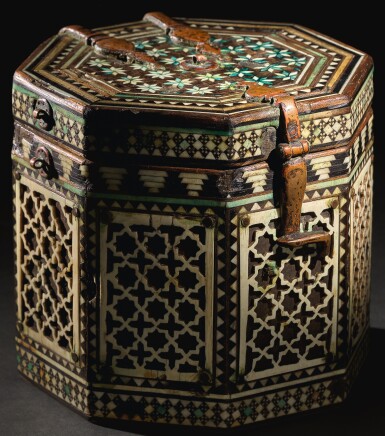AN EXTREMELY RARE WALNUT AND BRASS BALANCE BAROMETERH. MAPPLE, LONDON, CIRCA 1856 With arched brass scale calibrated in barometric inches with the usual observations and engraved H. Mapples PATENT Barometer to upper margin raised over pivoted cradle with counterweight and operating moving pointer for the scale with second recording pointer set behind, the whole raised on a cavetto moulded rectangular brass plinth over walnut box base enclosing rack-and-pinion mechanism for the adjustment of the recording pointer via a knob to the front, on cavetto moulded skirt and brass ball feet, (aneroid vacuum chamber lacking).34cm (13.5ins) high, 17cm (6.75ins) wide, 11cm (4.25ins) deep. Provenance: The exhibition collection of Barometer World Museum, Merton, Devon; described and illustrated in Collins, Phillip Aneroid Barometers and their Restoration pages 205-6. Henry Mapple is recorded in Baillie, G.H. Watchmakers & Clockmakers of the World as publishing two articles in 'Trans. Soc. Arts' on clock springs and an escapement in 1838 and 1839 respectively. The British Museum webs archives notes that Henry Mapple was a former telegraph engineer for the Electric Telegraph Company who exhibited an electric telegraph, a clock escapement, and a telegraphic fire alarm at the Great Exhibition of 1851. He also, along with William Morris held a Patent for electric timekeeping (No. 1515, 22nd June 1860 'Electric Clocks and Telegraphs').Henry Mapple devised this type of barometer and patented it in 1856 (Patent No. 1029). The pivoted cradle would have originally held a 'hollow tube, thin and exhausted of air'. This tube was designed to expand or contract due to change in barometric pressure causing a shift in the balance of its weight; consequently the balance cradle would tip and the pointer would move in relation to the scale.
AN EXTREMELY RARE WALNUT AND BRASS BALANCE BAROMETERH. MAPPLE, LONDON, CIRCA 1856 With arched brass scale calibrated in barometric inches with the usual observations and engraved H. Mapples PATENT Barometer to upper margin raised over pivoted cradle with counterweight and operating moving pointer for the scale with second recording pointer set behind, the whole raised on a cavetto moulded rectangular brass plinth over walnut box base enclosing rack-and-pinion mechanism for the adjustment of the recording pointer via a knob to the front, on cavetto moulded skirt and brass ball feet, (aneroid vacuum chamber lacking).34cm (13.5ins) high, 17cm (6.75ins) wide, 11cm (4.25ins) deep. Provenance: The exhibition collection of Barometer World Museum, Merton, Devon; described and illustrated in Collins, Phillip Aneroid Barometers and their Restoration pages 205-6. Henry Mapple is recorded in Baillie, G.H. Watchmakers & Clockmakers of the World as publishing two articles in 'Trans. Soc. Arts' on clock springs and an escapement in 1838 and 1839 respectively. The British Museum webs archives notes that Henry Mapple was a former telegraph engineer for the Electric Telegraph Company who exhibited an electric telegraph, a clock escapement, and a telegraphic fire alarm at the Great Exhibition of 1851. He also, along with William Morris held a Patent for electric timekeeping (No. 1515, 22nd June 1860 'Electric Clocks and Telegraphs').Henry Mapple devised this type of barometer and patented it in 1856 (Patent No. 1029). The pivoted cradle would have originally held a 'hollow tube, thin and exhausted of air'. This tube was designed to expand or contract due to change in barometric pressure causing a shift in the balance of its weight; consequently the balance cradle would tip and the pointer would move in relation to the scale.















Testen Sie LotSearch und seine Premium-Features 7 Tage - ohne Kosten!
Lassen Sie sich automatisch über neue Objekte in kommenden Auktionen benachrichtigen.
Suchauftrag anlegen